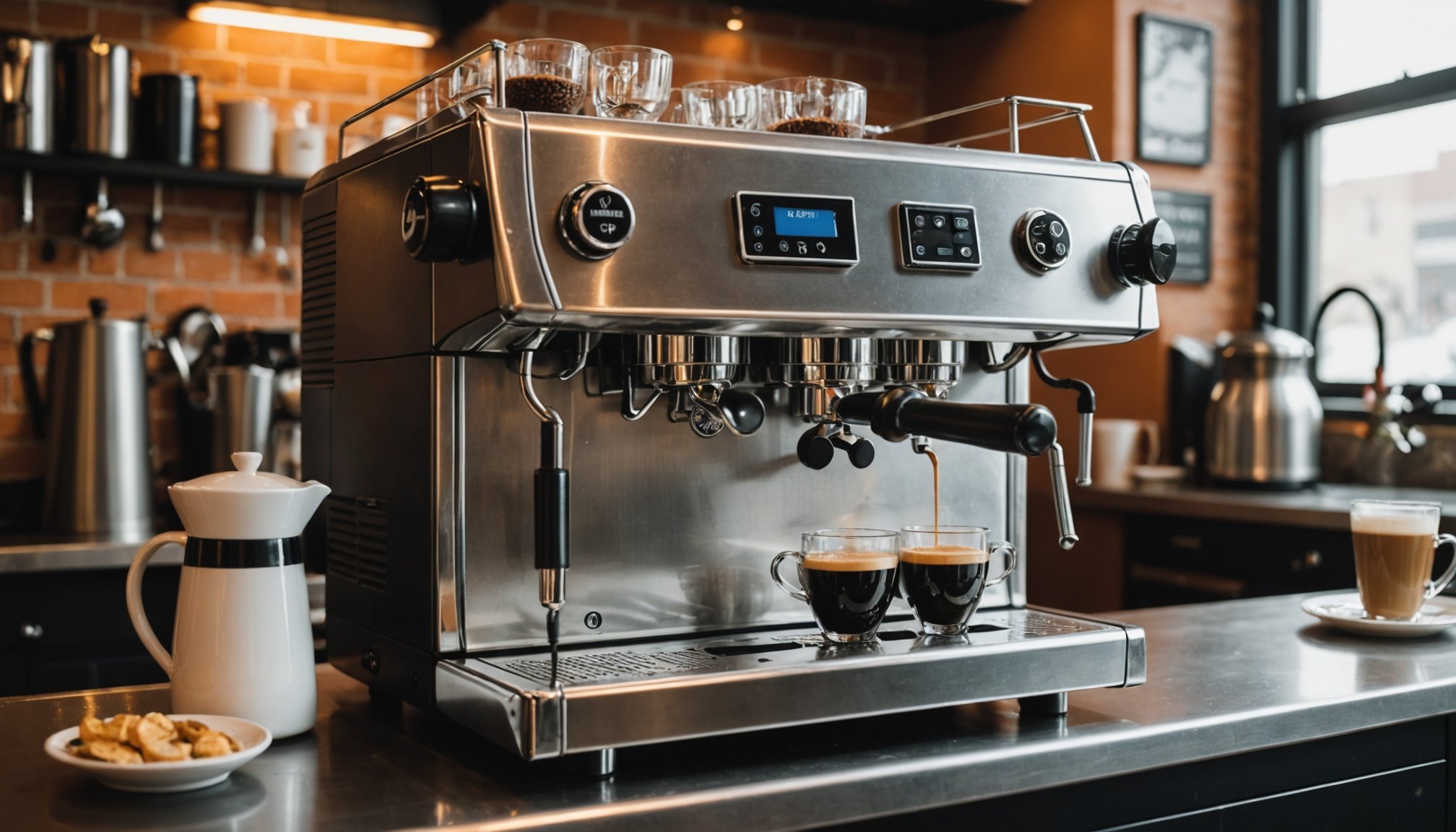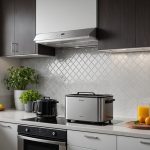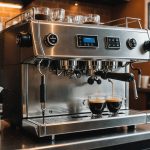Setting up a commercial espresso machine in your café isn’t just about coffee; it's about enhancing the customer experience. With the right installation, you can ensure optimal performance and maintain product quality. From choosing the perfect location to understanding power requirements, your decisions can significantly impact efficiency and ambience. These essential tips will guide you through each step, ensuring your café offers that perfect cup of espresso customers will love. Let's make your coffee dreams a reality with a seamless installation process.
Initial Considerations for Installation
When planning for installation, understanding the café's layout and workflow is crucial. This ensures that the installation process complements the existing environment rather than disrupts it. Start by mapping out the café's floor plan, noting areas with high foot traffic and potential bottlenecks. This step is vital in determining the optimal placement for machinery, ensuring the installation aligns with the café's operational flow.
Topic to read : Ergonomic Kitchen Tools: How to Alleviate Chef Fatigue in High-Volume Restaurants
Next, assess the space requirements and machine dimensions. Measure the available space to ensure the equipment fits without obstructing movement or other functionalities. This is where precise installation planning becomes essential. Consider the dimensions of each machine and its required clearance for operation and maintenance.
Electrical and Plumbing Needs
Evaluating the café's electrical and plumbing infrastructure is another key aspect of installation planning. Ensure that the electrical system can support the new equipment without overloading circuits. Similarly, verify that the plumbing setup can accommodate any water or drainage needs.
In the same genre : Discover the Cutting-Edge Biodegradable Packaging Innovations Transforming Take-Out at Eco-Friendly Cafes
- Electrical Requirements:
- Voltage compatibility
- Circuit capacity
- Plumbing Considerations:
- Water supply proximity
- Drainage accessibility
By addressing these factors, you can facilitate a smooth installation process, minimizing downtime and ensuring efficient operations from the outset.
Choosing the Right Location
Strategically placing equipment is vital for optimal café operations.
Factors Influencing Machine Placement
Selecting the optimal placement for machinery within a café requires careful consideration of various factors. Accessibility is crucial; machines should be positioned where staff can easily reach them without hindering customer movement. This enhances the café's workflow and boosts efficiency.
Consider the café's workflow when deciding on machine location. Equipment should be placed to support a seamless operational flow, minimizing unnecessary movements that could slow down service. For instance, positioning the espresso machine near the serving area can streamline the coffee-making process.
Accessibility for Staff and Customers
Accessibility extends to customer interactions as well. Machines should not obstruct customer pathways or seating areas. Ensuring clear paths contributes to a pleasant customer experience and supports efficient service delivery.
- Key Considerations:
- Staff reachability
- Customer pathways
- Workflow efficiency
Impact on Workflow and Efficiency
The impact on workflow is significant when machines are strategically placed. Proper placement can reduce bottlenecks, allowing staff to work more efficiently. This not only improves service speed but also enhances the overall customer experience, leading to increased satisfaction and potentially higher sales.
Necessary Tools and Equipment
Ensuring a seamless installation process requires the right tools and equipment.
Essential Tools for Installation
Having the right installation tools is critical for a successful setup. Here's a list of essential tools:
- Drill and drill bits for securing equipment
- Level to ensure machines are properly aligned
- Wrench set for tightening connections
- Screwdrivers for various fastening needs
These tools facilitate a smooth installation, minimizing errors and ensuring equipment is securely in place.
Recommended Equipment for Utility Setup
Setting up utilities requires specific equipment to ensure compatibility and safety. Consider these items:
- Voltage tester to check electrical connections
- Pipe wrenches for plumbing adjustments
- Multimeter for electrical diagnostics
These tools assist in verifying that the café's electrical and plumbing systems meet the necessary requirements for new machinery.
Safety Gear and Precautions
Safety during the installation process is paramount. Equip your team with:
- Gloves to protect hands
- Safety goggles to shield eyes
- Ear protection if noise levels are high
Taking these precautions helps prevent accidents and ensures a secure working environment for everyone involved. Prioritizing safety not only protects personnel but also contributes to a successful and efficient installation.
Setting Up Utilities
Efficient utility setup is crucial for seamless café operations.
Connecting to Water Supply and Drainage
Properly connecting to the water supply and drainage is essential for the smooth operation of café equipment. Ensure that the water lines are securely attached to prevent leaks. Verify that the drainage system is capable of handling the output without causing overflow or backups.
- Key Steps:
- Secure water line connections
- Test for leaks
- Ensure drainage capacity
Electrical Requirements and Safety Measures
Meeting the electrical requirements is vital for safe and efficient equipment operation. Confirm that the café's electrical system can handle the load demands of new machinery. Implement safety measures, such as circuit breakers and surge protectors, to safeguard against electrical faults.
- Essential Safety Measures:
- Install circuit breakers
- Use surge protectors
- Regular system checks
Ensuring Proper Ventilation for the Machine
Adequate ventilation is necessary to maintain optimal machine performance and prevent overheating. Position equipment to allow for proper airflow and avoid blocking vents. This helps in maintaining the longevity and efficiency of the machines.
- Ventilation Tips:
- Keep vents clear
- Ensure space around machines
- Regularly check airflow paths
By addressing these utility setup steps, you ensure a robust and efficient foundation for your café's operations.
Step-by-Step Installation Process
Follow these steps for a seamless installation experience.
Preparing the Site
Before starting the installation, ensure the site is ready. Clear the area of any obstructions and verify that all necessary utilities are accessible. This preparation minimizes delays and complications. Measure the space again to confirm that the espresso machine will fit properly. Check the electrical outlets and plumbing connections to ensure they are in the correct locations.
- Preparation Checklist:
- Clear installation area
- Confirm utility access
- Measure space for equipment
Installing the Espresso Machine
Begin the installation of the espresso machine by positioning it according to the café's layout plan. Secure the machine using appropriate tools, ensuring it is stable and level. Connect the water supply and ensure all electrical connections are secure. Use a level to check that the machine is perfectly aligned, preventing operational issues.
Testing and Calibration
Once the espresso machine is installed, perform thorough testing and calibration. This step is crucial to ensure the machine operates efficiently and produces high-quality coffee. Check all electrical components for safety and functionality. Adjust the machine settings according to the manufacturer's guidelines.
- Testing Steps:
- Verify electrical safety
- Calibrate machine settings
- Test water flow and pressure
By meticulously following these steps, you ensure a successful and efficient installation process.
Maintenance and Troubleshooting
Ensure your machine runs smoothly with proper care and attention.
Routine Maintenance Tasks
Regular maintenance is key to keeping your machine in top condition. Start with daily cleaning, ensuring that all components are free from coffee residue. Weekly, descale the machine to prevent mineral build-up. Monthly, inspect the seals and gaskets for wear and replace them as needed.
- Daily Tasks:
- Clean drip tray and portafilter
- Wipe down surfaces
- Weekly Tasks:
- Descale the boiler
- Check water filter
- Monthly Tasks:
- Inspect seals
- Lubricate moving parts
Common Issues and Solutions
Even with regular maintenance, issues may arise. Common problems include inconsistent water temperature and low pressure. For temperature issues, ensure the thermostat is functioning correctly. Low pressure might indicate a blocked filter; clean or replace it to restore optimal performance.
Importance of Professional Servicing
While routine maintenance can prevent many issues, regular professional servicing is crucial for long-term machine health. Professionals can identify potential problems early and perform thorough inspections that go beyond routine checks. This not only extends the lifespan of your machine but also ensures consistent performance, reducing unexpected downtimes.
Enhancing Customer Experience
Optimizing customer satisfaction through strategic practices.
Training Staff on Machine Operation and Maintenance
Properly training staff is essential for enhancing customer satisfaction. Ensure that all team members are proficient in operating and maintaining the espresso machine. This not only guarantees high-quality coffee but also minimizes downtime due to technical issues. Regular training sessions can keep skills sharp and improve service reliability.
Tips for Creating an Inviting Coffee Service Area
An inviting coffee service area significantly boosts customer satisfaction. Focus on cleanliness and organization to create a welcoming atmosphere. Arrange seating to encourage social interaction while maintaining clear pathways for staff and customers. Consider adding personal touches, such as fresh flowers or local art, to enhance the ambiance.
- Ambiance Enhancements:
- Fresh flowers
- Local artwork
- Comfortable seating
Gathering Customer Feedback for Continuous Improvement
Regularly gathering customer feedback is crucial for continuous improvement. Use surveys or suggestion boxes to collect insights on their experiences. Analyze feedback to identify trends and areas for enhancement. Implement changes based on this data to align your offerings with customer expectations, ultimately boosting customer satisfaction.











